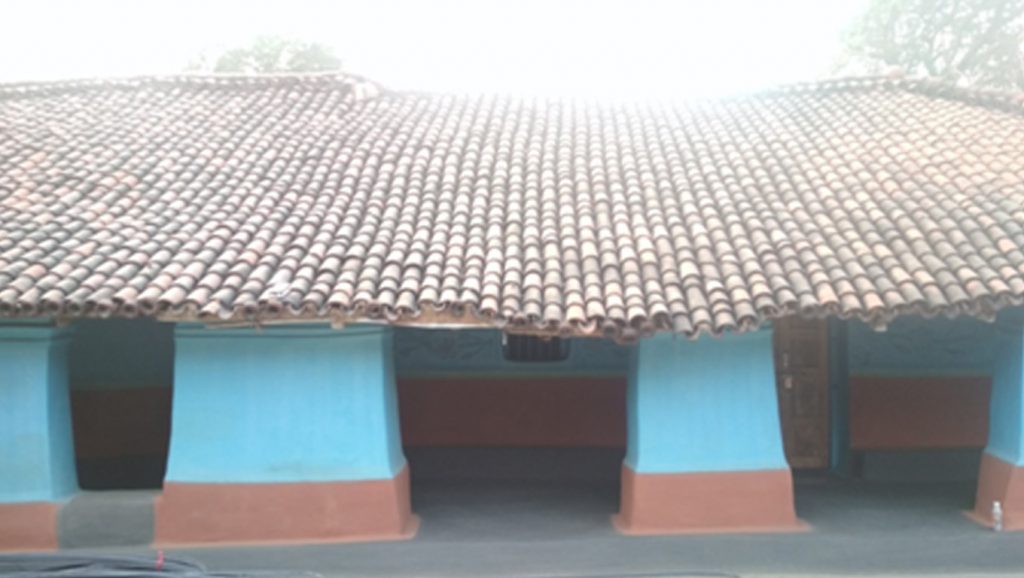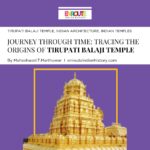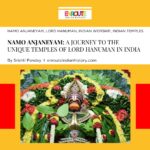Notes from a Diary of my field trip in the Naxal area of the country- Part I
- admin
- September 5, 2019
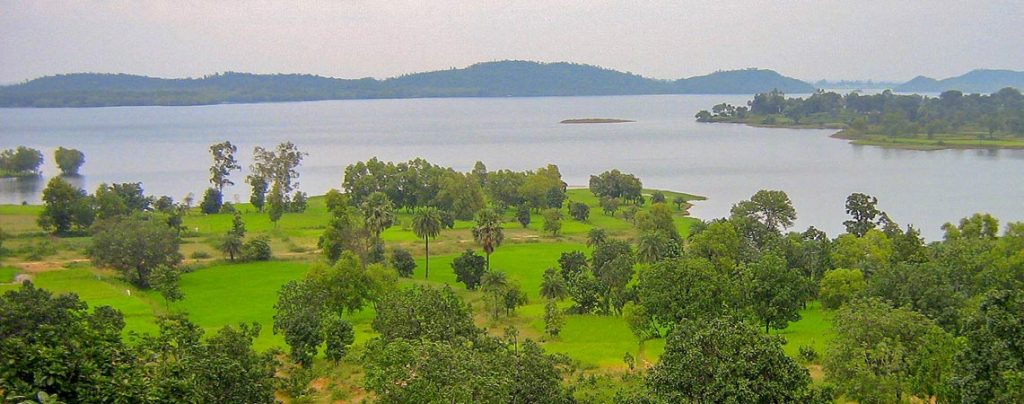

A travel journal by Mridugunjan Deka
The author pursued History from Hindu College, University of Delhi and a Master’s in Peace and Conflict Studies from TISS, Guwahati. He is presently pursuing MPhil as a Junior Research Fellow (UGC) from the University of Gauhati. He is interested in identity politics, memory studies, nationalism, forced migration issues, among other academic interests. Also an amateur poet, he loves to travel and dream a lot, mostly in what we call the Northeast of India.
Notes from a Diary of my field trip in the Naxal area of the country PART 1
“It might not be the Red Corridor anymore, but shades of pink were still keeping the region warm”
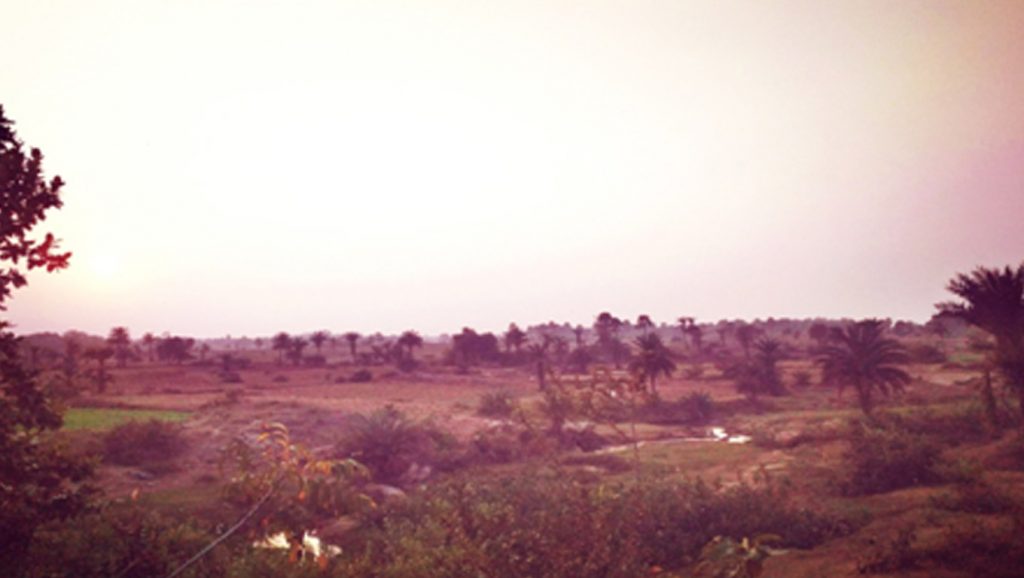
Landscape of a village in Shikaripara Block. The terrain is rugged and un-even.
It was one of those travels, of which in the beginning you have no idea of, except from snippets sourced from the movies, or hearsay of friends. The train reached Rampur Haat late at noon, and the luggage creaked every bone in my body, as I made efforts to ease myself into a corner on the platform. It was a medium sized station, smaller than the city’s I called home, and larger than the myriad small ones I passed on the way. It was early November; the air in Eastern Jharkhand had just begun to grow more dry and cold. But I was sweating under the great mass of the rucksack, blanket, sundry utensils and a laptop; an old ‘’coolie’’ put an end to the misery. He led me out of the great chaos, into the dusty hullabaloo outside. It was not exactly as I had thought, as scene after scene from Gangs of Wasseypur played themselves in the mind’s eye, but a sort of semblance was certainly there: dust; old, odd, impossibly overloaded buses; and the smell of cow-dung mixed with the smoke coming out of brick kilns. I boarded the bus where this kind ‘dada’ had led me. He cursed and shoved the group of passengers in front, desperately vying for an entry route into the already over-loaded bus. My odd 20kg load was pushed into the only luggage trunk at the lower side of the bus, and the journey began. As lady luck would have it, I learnt after boarding that it was the last bus for the day.
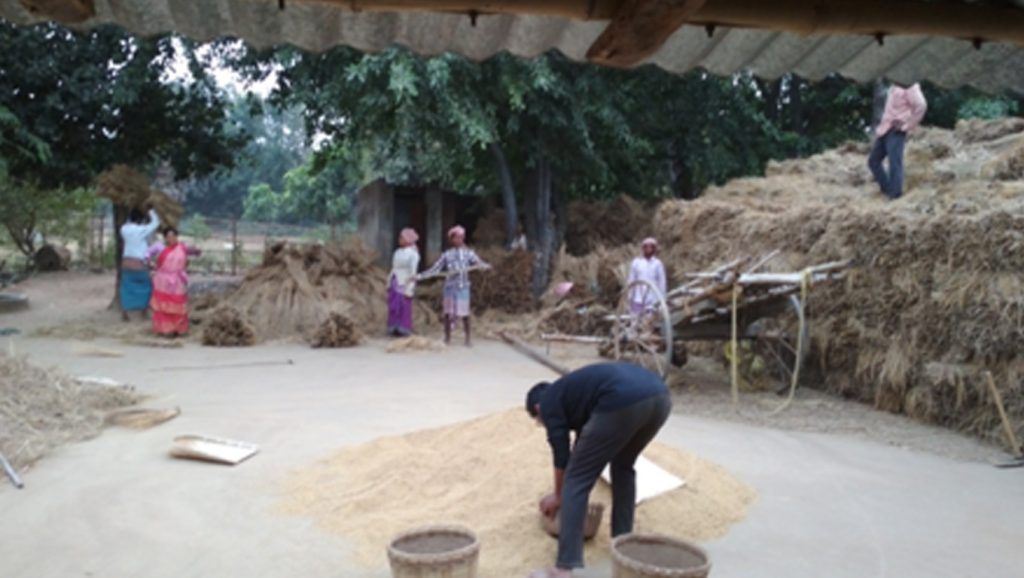
Local Adivasis at work after harvesting paddy. I tried my hand too.
I was based at Shikaripara Block at the development organisation’s office (which was really a 1970s era desi ,zamindar haveli) in Dumka District, a part of the Santhal Pargana. Before arriving, I did the odd, millennial styled Google research and found to my intrigue (and my mother’s and relative’s dismay) the following about Shikaripara in particular and Dumka in general: an intensely volatile and feared Maoist conflict zone. The worst was in the past though, and from a Red Corridor space that was tagged Severely Affected District by the Indian Government in 2007, the times had become relatively smoother by 2013, as in its wake- parts of Dumka were divided between Moderately Affected and Marginally Affected zones.
In the first week, I had to delve in extensive field visits on a two wheeler, accompanied by a professional development executive. My task was just to observe, learn the Adivasi customs and mannerisms, and not be overwhelmed by the sheer ruggedness of the terrain (the last one I made up for myself). My excitement was roused in between the visits at the thought of spending at least twenty days in a remote village, cut off from the rest of the world. It was mandatory for everybody in the development org to undergo this compulsory village stay, even for the likes of me who were hired on a consultancy basis and had more than one org to answer to. So, in one of these pilot field visits where we would often cover more than fifty kilometres in a single day crossing ravines, jungles and scattered , sleepy villages, I asked my colleague Pranjal from the pillion seat “What about the Naxal issue here?”. He made great efforts to speak over the noisy wind, craning his neck sideways taking care to keep one eye on the road- “It still is an issue. There is a good, substantive presence in the region.” I asked him how was it when he joined the org seven years ago – it was bad then, he said. “And, do you ask the people about this aspect of problem in their lives?”, I asked again. “No man”, he said, “we have a ‘don’t- ask -don’t –tell’ policy regarding Naxalism. If you want to stay out of trouble here, you would want to do the same. It is risky business, this talk.” I took the cue and asked him what he was going to have for dinner that night. It might not be the Red Corridor anymore, but shades of pink were still keeping the region warm. And sometimes blazing hot, something I realised as the days passed. As per the informal protocol, I resisted speaking, talking (and listening) about Left Wing Extremism during the stay in Asna, a small village flanked by hills on the one side, and surrounded on the others with wide sweeping fields of rice, tender Arjun trees hosting tasar silkworms, mustard plants and plain grass. Date and palm trees sprang out of nowhere, just as lower Assam’s villages have areca nut and coconut trees growing commonplace. A river crossed over the village at its periphery , it was a cool natural haunt of teenage boys and rock pythons alike. But about this and more in next series.
It is late January. I am bed-ridden and recuperating from a surgery at home in Guwahati. Lankesh calls me up, enquires about my health, I enquire about his in return. “Remember, that uncle (Lankesh’s tauji) you met at the mall in Dumka? He was involved in a counter-insurgency operation in Shikaripara. Two Maoists were killed in action.” The spot, I learn later, is two kilometres from Barmasia. Lankesh sends me pictures of the aftermath of the operation on Whatsapp and I scroll over and over. Dare I say, with mixed feelings?
The author pursued History from Hindu College, University of Delhi and a Master’s in Peace and Conflict Studies from TISS, Guwahati. He is presently pursuing MPhil as a Junior Research Fellow (UGC) from the University of Gauhati. He is interested in identity politics, memory studies, nationalism, forced migration issues, among other academic interests. Also an amateur poet, he loves to travel and dream a lot, mostly in what we call the Northeast of India.
